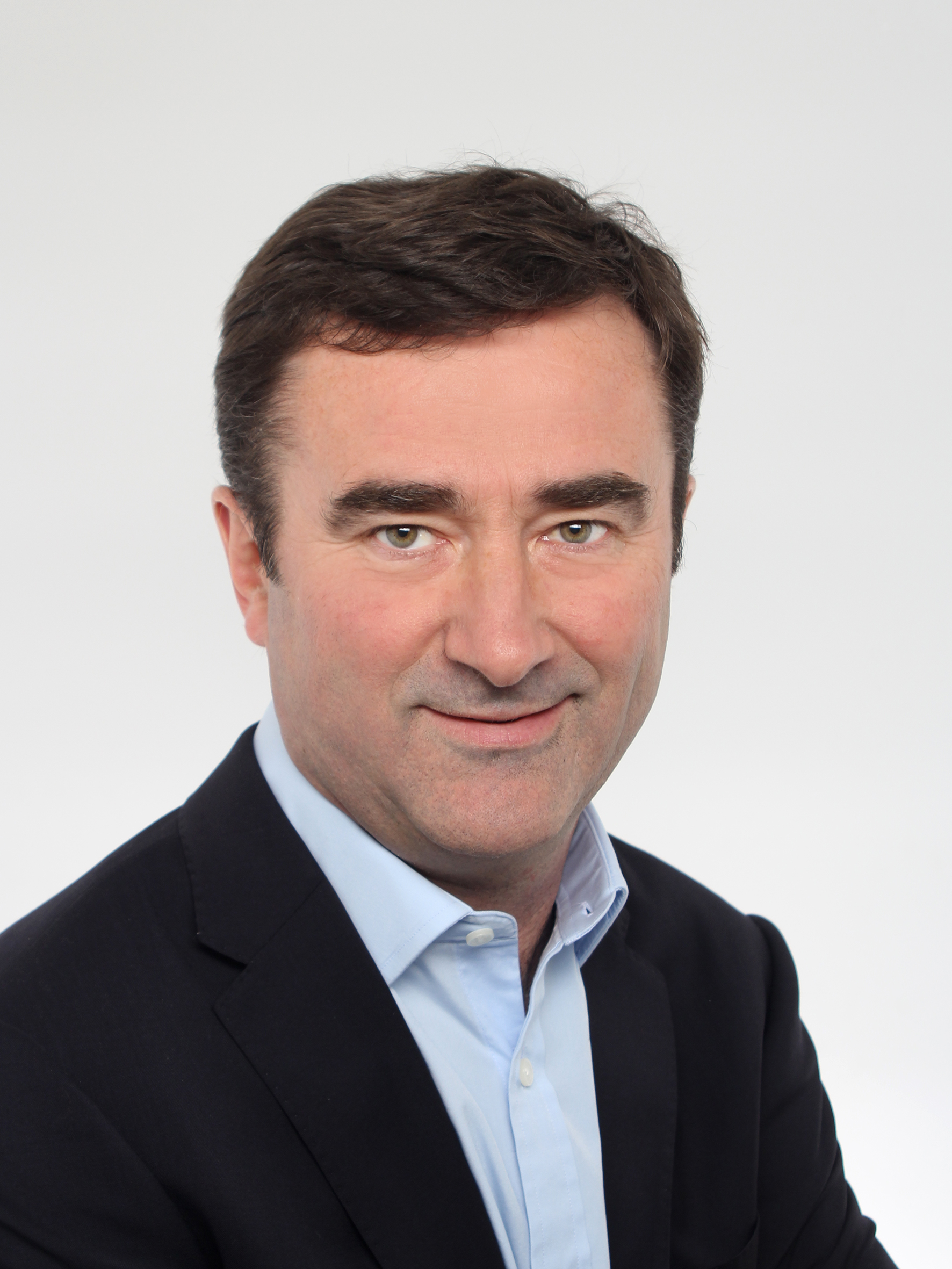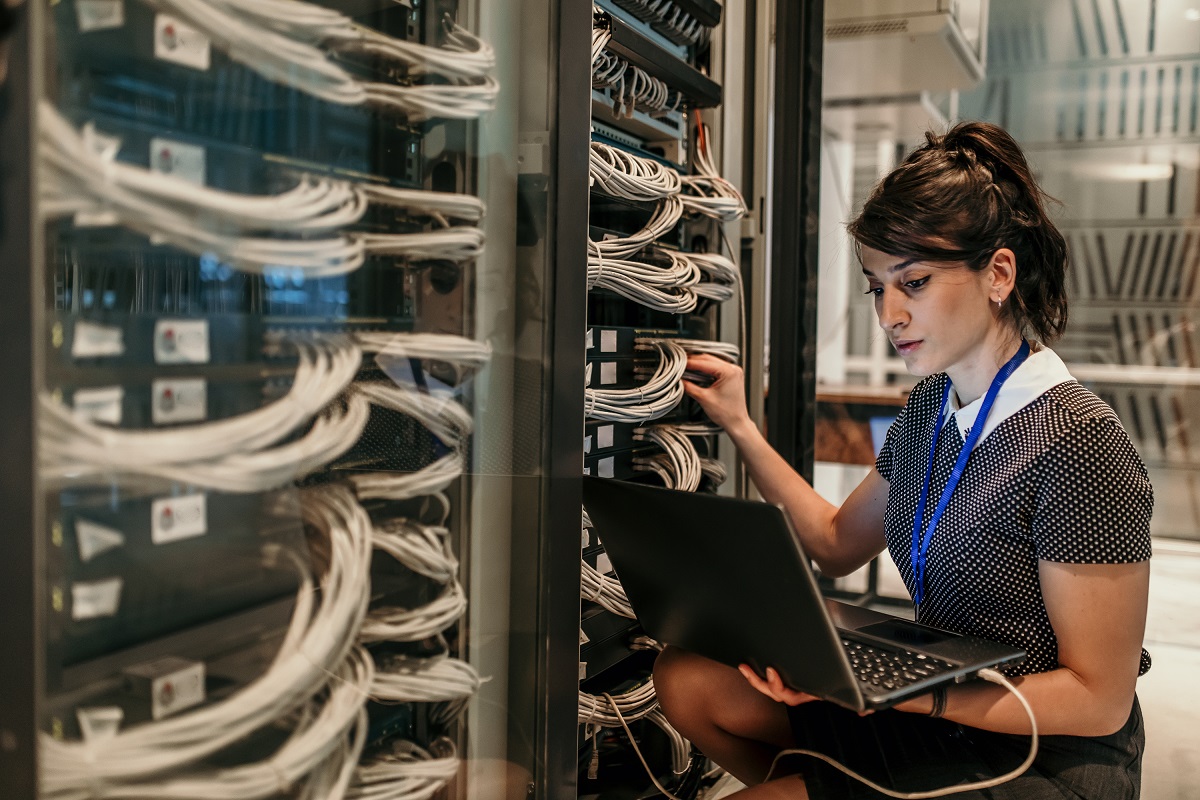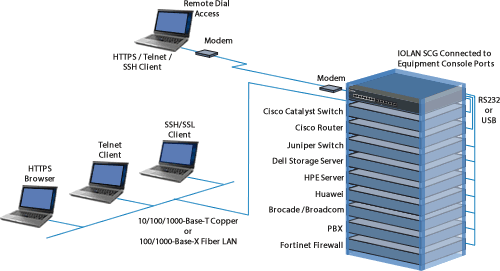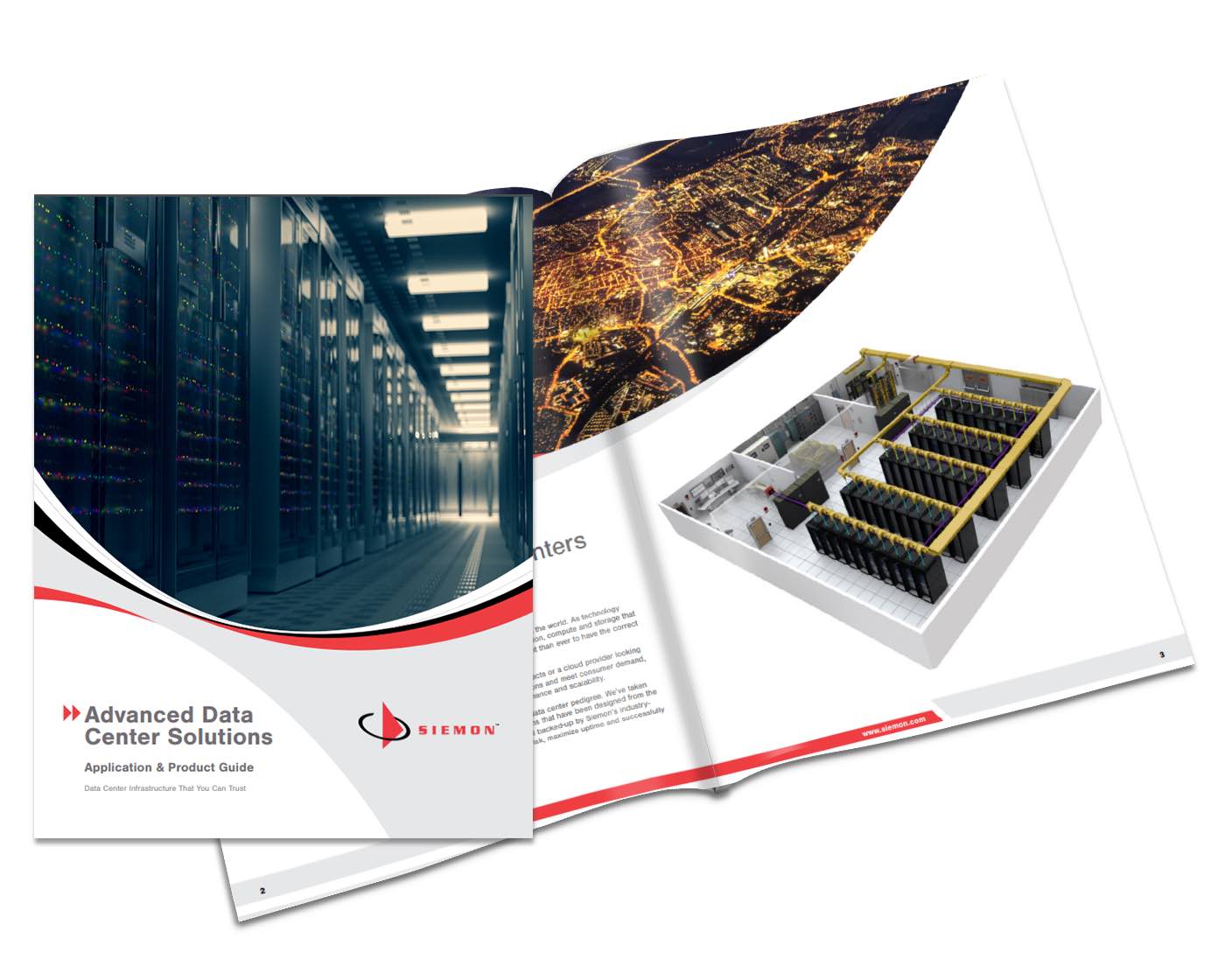IT
Cloud
Infrastructure
IT
News
Telecoms
DataQube announces Claude Sassoulas as new CEO
DataQube has appointed Claude Sassoulas as its new Chief Executive Officer (CEO) to head up the company’s next stage of corporate growth and explore its expansion plans.
Claude has over 25 years’ experience in building and running major B2B organisations within the ICT, telecom infrastructure, managed services, and cloud sectors. Prior to joining DataQube, he spent four years as COO at InterCloud. He was also the Managing Director (Europe) at Tata Communications for 13 years, where he grew the business from the ground up to a $500m company.
Under his leadership, DataQube is looking forward to building on the progress it has made so far in the edge computing space and continuing to establish its novel offering as the go-to solution for localised data processing. Over the forthcoming weeks, he will be bolstering DataQube’s commercial and technical expertise through targeted recruitment and overseeing the establishment of a global reseller and partner network.
“I’m delighted to be joining this disruptive company during such an exciting growth phase,” says Claude. “Demand for real-time data handling is growing now that 5G rollouts and the technologies they support are gaining momentum, and existing edge facilities are struggling to deliver. Our solution’s flexible architecture, HPC capabilities, green credentials, and compelling price point are set to be a real game changer in the data centre industry.”
“Claude’s proven ability to scale businesses in telecoms and cloud infrastructure will be invaluable to the commercialisation and development of DataQube,” says Anne-Laure de la Roche, Head of Asset Management at RGREEN INVEST. “Global digitalisation is driving the need for sustainable data handling at the edge, and DataQube is the optimal solution.”
Unlike conventional data centre installations, DataQube pods can be fully up and running within a six-month timeframe, for 50% less Capex and with one of the lowest PUE in the industry. These performance and sustainability advantages, together with the solution’s person-free design and lightweight structure make installations possible in a diverse range of locations where traditional installations are neither practical nor feasible. Moreover, DataQube’s efficient use of space and optimised IT capacity, along with its ability to dramatically lower overall energy usage and CO2 emissions, is setting a new standard in the industry.
www.dataqube.com
www.rgreeninvest.com
Beatrice - 30 August 2022
Data
Data Centres
IT
Uncategorised
Dell Technologies to provide next generation business continuity for hybrid IT
Schneider Electric has teamed up with strategic partner Dell Technologies to deliver an automated shutdown solution that is ideal for hyperconverged infrastructure. It focuses on the seamless integration of APC PowerChute Network Shutdown with Dell VxRail Clusters by communicating over the network with the APC UPS (Uninterruptible Power Supply).
Together, Dell and Schneider Electric are working on the next generation of ensuring business continuity for sprawling IT infrastructure with products that protect against unplanned power events. Developed in full collaboration with Dell Technologies, this new offer is part of Schneider Electric’s modernised EcoStruxure IT software, which is designed to make hybrid IT infrastructure more resilient, secure, and sustainable.
The modernisation of EcoStruxure IT addresses how Data Centre Infrastructure Management (DCIM) has changed tremendously since it first emerged as a software category. Today’s hybrid IT environment is challenging even the most sophisticated CIO organisations. We call this trend DCIM 3.0. Earlier this month, Schneider Electric announced that it has evolved DCIM from individual data centres to cover the full spectrum of sprawling, hybrid IT. The company is investing in EcoStruxure IT to provide more capability, flexibility, and deployment options than ever before for enterprises and colocation facilities everywhere in the world.
Avoid corrupt data and damaged hardware
The integration of APC PowerChute with Dell VxRail Clusters is part of Schneider Electric's ongoing effort to reduce the complexity of the hybrid IT environment. When power is interrupted and UPSs extend past their battery runtime, the company's partners can’t just flip a switch and shut down operations. They follow a protocol. And if they don’t have trained staff on site, they could be looking at the expensive possibility of lost work, corrupt data, and damaged hardware at their traditional data centres and also at hundreds or thousands of unattended distributed sites.
But PowerChute integrated directly with the Dell VxRail API enables a safe shutdown of virtual machines followed by the VxRail cluster including hosts; often referred to as a graceful shutdown with no loss of work, no data corruption, and no hardware damage. This new offer includes the option for automatic restart so when the power returns, your systems return also, ensuring minimal downtime.
Simple and fast for partners to deploy with easy integration
Dell Technologies and Schneider Electric are making business continuity easy for its partners because they have figured out the behind-the-scenes technology to make this new product simple and fast for its partners to deploy with easy integration into their systems. PowerChute has been revolutionised in the past few years and in addition to a graceful shutdown and restart, it saves space and reduces hardware needs because you don’t need to deploy it on a separate machine.
We live in a time of complex, distributed IT architectures and this new offer is another way Schneider Electric and Dell Technologies are joining forces to leverage complimentary portfolios of products and services to create innovative, end-to-end technology solutions that are easy to purchase, deploy, and operate. To learn more, please watch this helpful video, visit our Dell Technologies Alliance page, and learn more about our EcoStruxure IT software.
Carly Weller - 20 July 2022
IT
News
Projects
CloudStratex transforms Munich Re’s tech potential with CMDB technology
CloudStratex has celebrated the major milestone of delivering single-pane-of-glass visibility to Munich Re’s IT ecosystem.
Its intervention has provided automated access to Munich Re’s key assets and altered the firm’s approach from manual spreadsheets to cutting-edge operational processes, achieved in record time.
Since its foundation in 1880, Munich Re’s reputation as a global specialist in risk has made the firm a sought-after partner organisation for a wealth of businesses and institutions.
Given its status as a leading insurance firm with its finger on the pulse of technological change and transformation, Munich Re recognised the need to upgrade its IT ecosystem with clear visibility over its various configuration items.
In addition, the new CMDB allows for automated access to all assets and data sources used across the group – a substantial improvement on the variegated individual databases and manually maintained spreadsheets that comprised Munich Re’s previous system.
The benefits delivered by CloudStratex and ServiceNow’s CMDB aren’t limited to efficiency, but also include significant strides in terms of regulatory compliance.
Munich Re understood and embraced the increased resilience represented by a strong CMDB implementation, which is particularly valuable amidst the complex regulatory environment created by BaFin.
CloudStratex was able to complete the project six months ahead of schedule, delivering results in nine months as opposed to the projected 15.
This swift delivery is partially attributable to CloudStratex’s deep understanding and configuration potential of ITOM Discovery, which meant that, of the various critical components which comprised Munich Re’s IT environment, the consultancy discovered 99% automatically.
Duncan Docherty, Chief Technology Officer at CloudStratex, says: “The new CMDB is clean, fresh, and free of customisation, providing a clear, strong, usable baseline with out-of-the-box tools delivering major improvements. It’s a massive step forward on the ServiceNow journey we’re taking Munich Re on.”
Beatrice - 23 June 2022
Data Centres
IT
News
The Barcelona Supercomputing Centre and Lenovo announce partnership
A research agreement has now been signed between the Barcelona Supercomputing Centre and Lenovo to advance research in multiple Spanish and EU priority sectors for high-performance computing. Through this collaboration, Lenovo will invest $7 million over three years to advance precision medicine through the use of supercomputing, the design and development of open-source European chips and the creation of more energy-sustainable supercomputers and data centres.
The event took place at the BSC-CNS headquarters with its Director, Mateo Valero, its Deputy Director, Josep Maria Martorell, and Executive Vice President of Lenovo and President of Lenovo Infrastructure Solutions Group, Kirk Skaugen.
Mateo Valero, Director of the BSC-CNS states: “I am very proud of this important collaboration with Lenovo as we continue our longstanding work together tackling the great challenges of these priority lines of research from the Spanish and European Commission's agenda. This research collaboration will generate significant returns for the region, not only human and scientific, but also technological and economic."
Noam Rosen, EMEA Director, HPC & AI at Lenovo says, “We are excited to announce the agreement to jointly develop novel European supercomputing technologies for the exascale era, which extends from our six year partnership with BSC. Our shared goal is to embrace open architecture to support scientists and researchers with smarter, more efficient and sustainable supercomputing platforms. This agreement, and our investment contribution, are just the latest examples of Lenovo’s ongoing commitment to Europe, joining our new manufacturing facility in Hungary and the AI Innovation Centre Germany. Lenovo is passionate about helping researchers at BSC solve one of humanity’s greatest challenges and is proud to support BSC’s leadership driving European innovation in HPC.”
Supercomputing: key to advancing precision medicine
The exponential increase in the production of genomic data produces multiple petabytes of information, requiring the use of high-performance computing (HPC) resources for analysis, such as those of the MareNostrum supercomputer at the BSC-CNS. The efficient analysis of large-scale genomic data will be key to advancing precision medicine and the generation of new treatments against diseases such as cancer. Thus, one of the collaboration projects between Lenovo and the BSC-CNS is aimed at improving and accelerating precision medicine using supercomputing.
In this context, the BSC-CNS team, led by the researcher Miquel Moretó, will study genomic analysis algorithms to design new accelerators that will be integrated into the HPC platforms of the future that will serve to improve the efficiency of these highly sophisticated analyses. The algorithms created and optimised by the BSC-CNS team will target GOAST (Genomics Optimisation and Scalability Tool) developed by Lenovo to optimise and improve genomic analysis. In addition, these analysis tools will be extended to other disciplines such as epigenetics, metagenomics, microbiology, virology, and other areas of life and health sciences.
More sustainable and energy-efficient supercomputers
The growing need to provide researchers with more powerful supercomputers and data centres requires considerable increases in energy consumption, which is no longer sustainable. An estimate of the consumption of some of the most powerful supercomputers in the world can be around 25MW, which is equivalent to the consumption of a medium-sized city. The joint research between BSC-CNS and Lenovo will seek to build more energy-efficient, sustainable and lower-cost supercomputers and data centres. The group (coordinated by the researcher Julita Corbalán) will lead this challenge at the BSC-CNS. In 2016, this team developed, together with Lenovo, new system software (EAR, Energy Aware Runtime) for the optimisation and energy efficiency of HPC tools, and together with the UPC launched the spin-off EAS (Energy Aware Solutions) to continue advancing in this direction.
This new research project will seek more powerful, flexible, and robust systems for energy-saving within infrastructure solutions, such as software for energy optimisation and management. They will look to incorporate new technologies developed by INTEL within the algorithms recently developed by Corbalán's team. The project will also seek to extend and monitor energy expenditure to the entire infrastructure architecture.
European autonomy in chip design
In 2019, the BSC announced the creation of the European Laboratory for Open Computing Architecture (LOCA), whose mission is to design and develop chip technology within Europe, based on open -RISC-V instruction set architecture. This laboratory, led by researcher John D. Davis, was born as a collaborative project with companies, foundations, and academic institutions to create open-source hardware that guarantees transparency, competitiveness, and technological autonomy. The incorporation of Lenovo in this project will help facilitate progress towards this priority objective for Europe. In the same context of LOCA, the BSC also recently announced the creation of a joint laboratory with INTEL to develop chips with European technology.
The collaboration between BSC-CNS and Lenovo is the continuation of joint work that dates to 2016, aimed at studying the use of artificial intelligence in the field of precision medicine or the sustainability of supercomputers, amongst others.
Beatrice - 22 June 2022
IT
News
Product
Perle IOLAN Console Servers are top-of-rack in Bielefeld University
The Bielefeld University IT Service Centre (BITS) aspires to have its IT network infrastructure recognised as one of the most modern data centres in Germany. A key factor to achieving this goal will be measured by their ability to maintain uninterrupted user access to the systems, applications, and information on the network.
Like other corporations and education institutions with distributed IT environments, the university has equipment dispersed in multiple ‘tech rooms’ throughout the campus. This means that on-site management of the network is complicated and time-consuming if IT staff must physically be in front of the server, switch, or application that requires attention.
To solve this problem, BITS Network Engineers implemented an Out-of-Band Management (OOBM) Network. An IOLAN Console Server installed at the top of each rack now provides network administrators an alternate path to remotely access Cisco and HP switches, WLAN controllers, and VPN servers, as if they are locally connected through a direct serial console port connection, even if the network is down. Disruption and downtime have been minimised due to better visibility of the physical environment and status of equipment.
A member of the BITS Network Team comments, “Above all, we are impressed by the stability of the IOLAN Console Servers during operation. As far as I can remember, the IOLANs have been running without a reboot ever being necessary. We are very satisfied.”
Beatrice - 15 June 2022
IT
Give us 20 seconds, and we’ll give you the answer to IT uncertainty
IT is a serious matter…
...but, let's face it, there are some strange things that people in IT face every day.
That’s what IT Happens is all about. It’s a quick look at how nothing in IT is certain. But it can be.
See how Schneider Electric – through the power of APC offerings and EcoStruxure IT software – can provide the resilience, reliability, and sustainability you need. That’s no joke.
https://www.youtube.com/watch?v=l8eByJ5eSNs
Carly Weller - 17 May 2022
Data Centres
Edge
IT
Product
EkkoSense extends data centre optimisation support to edge sites
EkkoSense has extended its EkkoSoft Critical solution to ensure full support for edge sites. This new capability will provide data centre operators with the widest possible view of their critical facilities’ performance - from the smallest server room through to the largest rooms. This means that, for the first time, operations teams can gain real-time access to power, cooling and space optimisation data from across their entire data centre estate.
EkkoSense’s new edge site monitoring and optimisation solution integrates previously unused data sources to support edge facilities that were either left unmonitored or only tracked by generalised Building Management Systems (BMS). Edge sites now covered by EkkoSoft Critical include single or smaller server rooms, hub sites and telecom equipment rooms. Edge site data can now be viewed, analysed and optimised using EkkoSoft Critical’s intuitive single pane of glass enterprise estate performance visualisations.
“With analyst firms now estimating that soon more than half of enterprise-generated data will be either created or processed outside of the data centre or the cloud, it’s essential for organisations to have much greater insight into their growing number of edge facilities,” says Paul Milburn, EkkoSense’s Chief Product Officer. “Now we’re able to not only support operations teams with enterprise-wide visibility, but also deliver the thermal, power and capacity management support they need to run remote sites more efficiently while also supporting greater IT loads.”
Unlike traditional remote BMS solutions that can only respond to hard faults, the EkkoSense solution features more flexible alerting with user permission configuration. This effectively delivers a more comprehensive ‘mini-BMS’ alternative at around a tenth of the cost of more complex BMS solutions.
EkkoSense software for edge is particularly easy to deploy, with a starter kit package of wireless sensors and the EkkoHub Wireless Data Receiver that supports self-installation by non-IT professionals. Each EkkoHub can support up to 200 wireless sensors and up to 20 Modbus/SNMP devices in direct mode, ensuring support and scalability for a broad range of edge sites from single server rooms through to larger hub sites or equipment rooms.
Beatrice - 13 May 2022
IT
Alibaba ranked the world’s third largest IaaS provider
For the fourth year in a row, Alibaba is ranked as the third largest Infrastructure-as-a-Service (IaaS) provider in the world and the biggest in Asia Pacific in 2021 by revenue. The latest Gartner report, Market Share: IT Services, 2021, showed Alibaba’s global market share expanded to 9.55%, while in Asia Pacific the company has achieved 25.5%.
With 84 availability zones in 27 regions, Alibaba Cloud provides IT services to millions of customers globally. According to the 2021 report, the business was able to increase its individual worldwide market share across verticals including transportation, banking and investment services, insurance, manufacturing and natural resources, and wholesale trade, with revenue growth between 49-67.5% for these sectors from a year earlier.
“Acting as the backbone for the digital transformation of a wide range of industries, IaaS is a key service for our business and we are glad to be recognised for our continued growth in this area. Over the past year, our customers have sped up their cloud migrations to ensure business continuity against the ongoing impact of the pandemic across the world. We see this transition to cloud-based operations as necessary for business growth,” says Jeff Zhang, President of Alibaba Cloud Intelligence. “Our commitment to supporting our global customers in these challenging times has helped us maintain a strong competitive position in the market. We will continue to deliver innovative products and services to drive the growth of the digital economy.”
Alibaba Cloud has been increasing its resources in strategic markets across Asia Pacific. In the past year, the company’s data centres in Indonesia and the Philippines commenced operations. It also announced the availability of its first data centre in South Korea in March 2022.
Alibaba Cloud launched Project AsiaForward in 2021, pledging an initial $1bn in funding and resources to cultivate a million-strong digital talent pool, empower 100,000 developers and support the growth of 100,000 technology start-ups in Asia Pacific.
Beatrice - 11 May 2022
Cloud
Colocation
Data Centres
IT
Hyve colocates at Telehouse to meet demand for sustainable infrastructure
Telehouse has announced that Hyve has chosen Telehouse as one of its colocation partners to help meet growing sustainability demands. With rich connectivity delivered through a fully secure, energy-efficient and power redundant data centre, Hyve can now realise its ambitions of providing customers with long-term sustainable solutions, and easily scale for future growth.
IT and cloud providers are under increasing pressure from organisations to improve sustainability, driven by the outcomes of COP26 and new sustainability disclosure requirements (SDRs) introduced in 2021. By housing IT infrastructure to Telehouse’s London Dockland’s data centre campus, Hyve aims to improve the sustainability of its mission-critical cloud, managed security and dedicated hosting services, while still delivering the fast, reliable and flexible service customers expect.
Hyve has experienced rapid growth over the past two years, recently featuring in the 22nd annual Sunday Times Profit Track ‘Ones to Watch’ supplement. With a fast-growing customer base, and plans to accommodate future expansion, the company needed a data centre partner with global site diversity, the ability to scale quickly when needed, and maximum levels of security to ensure the safety of customers and data.
Telehouse was the colocation provider of choice due its access to 900+ connectivity partners and strong green credentials. All Telehouse London data centres are powered by 100% renewable energy procured from certified wind, solar, biomass and hydro generators and are compliant with GHG Protocol Scope 2. Telehouse also complies with international ISO standards in Environment and Energy Management, and actively participates in voluntary environmental standards, regulations and frameworks, with the company considered an ultra-small emitter under the UK Emissions Trading Scheme.
James Annetts, Infrastructure Manager at Hyve, comments: “Climate change is transforming the way we all use energy, and customers are rightly demanding greater action from their cloud hosting providers on sustainability issues. We have ambitious environmental goals and will only work with data centre providers who actively strive to make sustainability a central part of their business operations. Telehouse was the perfect choice for us, offering not only a secure and sustainable location to house our infrastructure but the flexibility and scalability we need to support our future growth.”
Tipu Ali, Account Manager at Telehouse adds: “For cloud service providers like Hyve, having a safe, sustainable and resilient data centre is critical. Customers expect the best standards in security, uptime, and latency, but more importantly, that services are delivered with minimal impact on the environment. Colocation is a key enabler in driving improvements in energy efficiency, and only those providers that put sustainability at the forefront of their operations will be well-equipped to rise to the challenges ahead.”
Beatrice - 5 April 2022
Data Centres
Infrastructure Management
IT
Guide from Siemon provides design advice for next gen data centres
Siemon has announced a new data centre application and product guide designed to provide data centre professionals with comprehensive guidance for selecting, designing and deploying business-critical IT infrastructure in the data centre.
The rise of connected technologies and data volumes is driving change in the data centre. New data centre interconnect (DCI) technology, distributed cloud and full-mesh switch fabric architectures in highly virtualised environments result in the need for higher-density and more complex fibre links. Siemon’s guide highlights a range of specialised fibre solutions including high-density fibre enclosures and smaller diameter cables and assemblies that help manage these critical connections in tight data centre spaces.
As transmission speeds migrate to 400/800G Ethernet, the guide also highlights recommendations on how to migrate to high-density fibre channels utilising existing infrastructure. 400 Gigabit applications have initially been deployed in cloud data centres for switch-to-switch uplinks. Examples are given of how 400G switch-to-switch links can be deployed using singlemode channels that support Base-8 MTP fibre trunks either with 8 fibre MTP jumpers or with MTP-LC Cassettes and LC fibre patch cords. A 400G switch could then be connected to 4x100G switches using the same Base-8 trunk and a breakout MTP-LC cord. Other examples include 100G switch-to-server downlinks and how they can support breakout to 4x25G channels using direct attach copper cable assemblies (DACs).
Also showcased within the guide is Siemon’s comprehensive portfolio of data centre infrastructure solutions, including category 6A shielded copper cabling, pre-terminated and high density fibre patching solutions, automated infrastructure management (AIM) for remote monitoring and real-time view of data centre connections, as well as a new toolless fibre routing system for protecting and routing fibre cabling.
Information about the company’s data centre design services completes the guide, plus details of its ecosystem of partners, including Arista and Cisco.
“With this new application and product guide we encompass all the support that Siemon can offer to data centre professionals,” explains Alberto Zucchinali, Data Centre Solutions and Services Manager at Siemon. “It provides a single access point to the most relevant information to help data centre professionals identify the right solutions to support a robust, scalable and standards compliant network infrastructure.”
Beatrice - 4 April 2022

Head office & Accounts:
Suite 14, 6-8 Revenge Road, Lordswood
Kent ME5 8UD
T: +44 (0)1634 673163
F: +44 (0)1634 673173









